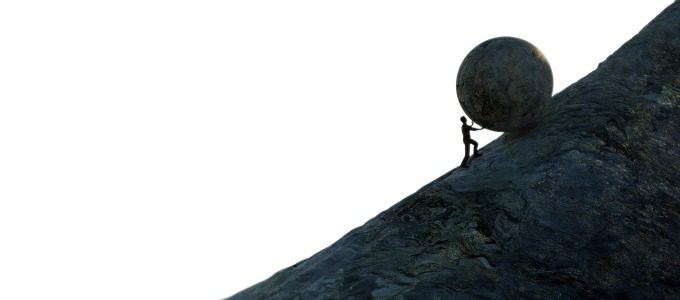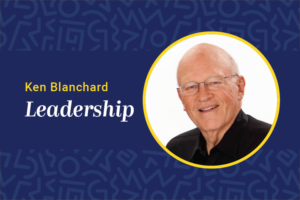
Goal setting, diagnosis and matching can help you achieve even stubborn goals.
by Ken Blanchard
January 15, 2016
Nearly all of us have made a New Year’s resolution and then not followed through. Why? Because accomplishing the goal is tougher than we thought.
Plus, when we get discouraged, we get little, if any, help from the people around us. In fact, they often smile and say, “We’ll believe it when we see it,” and walk away to let us tackle the resolution on our own. But if we could achieve the goal by ourselves, it wouldn’t need to be a New Year’s resolution — we would just do it.
For example, for years I struggled to manage my weight and fitness. I would start with the best intentions but inevitably get sidetracked by my busy schedule of traveling, writing and teaching. Time and again I would lose weight, only to regain it and then some.
One day, I had a blinding flash of the obvious: Why not use the time-tested principles I’ve been teaching over the years — namely, Situational Leadership II — to help me figure out the kind of leadership I needed to achieve my fitness goals? That realization led me to apply the three skills of Situational Leadership II — goal setting, diagnosis and matching — to manage my physical health. The results have been excellent.
1. Goal setting: All good performance starts with clear goals. But what makes a goal stick is having a compelling reason that motivates you to achieve the goal. I had set the goal to become fit many times. This time, I found a compelling purpose to get healthy: my new dog, Joy. I was just turning 70 when I got her. Knowing dogs can live 15 years or more, I decided to stay healthy until my mid-80s, so I would be around not only for my family but also for Joy. Most people worry about outliving their dog; I worried about my dog outliving me.
When it came to making sure my goals were SMART— specific, motivating, attainable, relevant and trackable — it was very helpful to have direction from my trainer and “Fit at Last” co-author, Tim Kearin. By taking my measurements and monitoring my progress bit by bit, Tim saw to it that my goals were achievable.
2. Diagnosis: Once goals are set, the next step is to diagnose your development level on each of the tasks related to your goal. Development level is a function of competence — your skills/experience — and commitment — your motivation and confidence.
It was important for me, and it will be important for you, to realize that you’ll need different leadership styles, or help, depending on your development level — your competence and commitment — related to each task.
For example, suppose your New Year’s resolution is to become physically fit: strong, lean, aerobically conditioned and flexible/balanced. Let’s say you’re excited about learning to lift weights. That makes you an enthusiastic beginner in strength training. You have no competence but high commitment. When it comes to weight control, you’re a disillusioned learner; you not only lack competence but also you’ve lost your commitment. In the area of aerobics, you’re a capable but cautious performer; you know how to use a treadmill but your commitment fluctuates with your mood. You’ve taken yoga for years, so in the area of flexibility/balance, you’re a self-reliant achiever, both competent and committed.
3. Matching: This third step involves finding someone who can provide you with the directive behavior or supportive behavior you need, given your development level. Using our example, because you’re an enthusiastic beginner in weight training, you need direction — someone to tell you what, when, where and how to lift weights. As a disillusioned learner about diet and nutrition, you need not only direction but also support — someone to listen to and praise you as you change your diet. As a capable but cautious performer in aerobics, you don’t need much direction, but you do need support — an accountability partner — to get on the treadmill or jogging path. Your passion for yoga makes you a self-reliant achiever in the area of flexibility/balance, so congratulations. Just keep hitting the yoga mat.
Few people can accomplish a major life change by themselves. I finally succeeded when I accepted more direction and support to achieve my fitness goals. How much direction and support do you need to succeed? Don’t go it alone. Find help to push through the paralyzing disillusioned learner stage and reap the rewards of becoming a self-reliant achiever.




